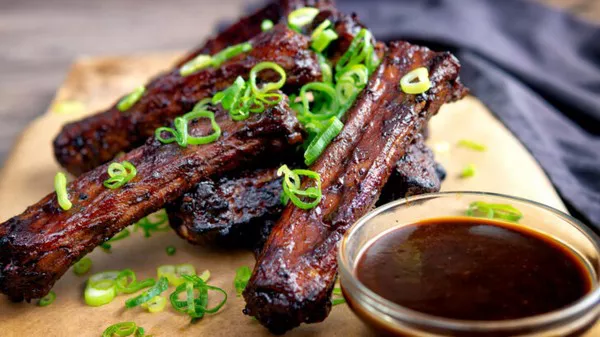Chinese cuisine boasts an array of flavors and techniques that have captivated taste buds worldwide. Among the diverse range of dishes, Chinese ribs stand out as a beloved delicacy, cherished for their tender texture and rich flavors. Whether you’re a seasoned chef or a novice in the kitchen, mastering the art of cooking Chinese ribs is an endeavor well worth the effort. In this comprehensive guide, we will delve into the traditional methods and modern twists that elevate this classic dish to culinary perfection.
Understanding the Ingredients
Before embarking on your culinary journey, it’s essential to familiarize yourself with the key ingredients that define Chinese rib dishes:
1. Pork Ribs: Selecting high-quality pork ribs is paramount to achieving tender, succulent meat. Opt for ribs with a good balance of lean meat and fat, such as baby back ribs or spare ribs.
2. Marinade: The marinade is where the magic happens, infusing the ribs with layers of flavor. Common ingredients include soy sauce, hoisin sauce, honey, ginger, garlic, and Chinese five-spice powder. Feel free to adjust the seasoning to suit your taste preferences.
3. Aromatics: Aromatics such as ginger, garlic, and scallions add depth and complexity to the dish. These ingredients are typically used in both the marinade and the cooking process to impart their distinctive flavors.
4. Cooking Liquids: Chinese ribs are often braised or simmered in a flavorful liquid to ensure tenderness. Stock, rice wine, and soy sauce are commonly used as the base for the cooking liquid, along with additional seasonings such as sugar and vinegar.
Preparing the Ribs
Proper preparation is key to achieving tender, flavorful ribs. Follow these steps to prepare your ribs for cooking:
1. Trimming: Start by trimming any excess fat from the ribs, as excessive fat can lead to greasy, unappealing results. Remove any tough membrane from the back of the ribs to ensure a more enjoyable eating experience.
2. Marinating: Place the ribs in a large bowl or resealable plastic bag, and pour the marinade over them, ensuring they are evenly coated. Allow the ribs to marinate for at least a few hours, or preferably overnight, in the refrigerator. This allows the flavors to penetrate the meat thoroughly.
SEE ALSO: How to Make the Best Hot and Sour Soup?
Cooking Methods
Chinese ribs can be prepared using various cooking methods, each offering its unique advantages in terms of flavor and texture. Here are three popular methods:
1. Braising: Braising involves cooking the ribs slowly in a flavorful liquid until they are tender and fall-off-the-bone delicious. To braise Chinese ribs, sear the marinated ribs in a hot pan to develop a caramelized crust, then add the cooking liquid and aromatics. Cover the pan and simmer gently until the ribs are tender, periodically basting them with the cooking liquid to ensure even flavor distribution.
2. Steaming: Steaming is a gentle cooking method that preserves the natural flavors and nutrients of the ribs. To steam Chinese ribs, place them on a heatproof plate or in a steaming basket, and steam them over boiling water for approximately 30-45 minutes, depending on the thickness of the ribs. This method produces incredibly tender ribs with a clean, pure flavor.
3. Grilling: Grilling imparts a smoky, charred flavor to the ribs, adding depth to the overall dish. To grill Chinese ribs, preheat your grill to medium-high heat and brush the grates with oil to prevent sticking. Grill the marinated ribs for 10-15 minutes per side, or until they are cooked through and charred in spots. Baste the ribs with any remaining marinade or a glaze of your choice for added flavor.
Serving Suggestions
Once your Chinese ribs are cooked to perfection, it’s time to plate up and enjoy! Here are some serving suggestions to complement your flavorful ribs:
1. Steamed Rice: Serve the ribs alongside steamed jasmine rice or fried rice for a satisfying and traditional Chinese meal.
2. Stir-Fried Vegetables: Pair the ribs with stir-fried vegetables such as bok choy, snow peas, or bell peppers for a balanced and nutritious meal.
3. Pickled Accompaniments: Offer pickled vegetables or kimchi on the side to add a tangy contrast to the rich flavors of the ribs.
4. Chinese Noodles: Serve the ribs with Chinese noodles tossed in a savory sauce for a hearty and comforting meal.
Conclusion
Cooking Chinese ribs is a culinary journey that rewards patience, attention to detail, and a passion for flavor. By understanding the key ingredients, mastering the preparation techniques, and exploring different cooking methods, you can elevate this classic dish to new heights of gastronomic delight. Whether you prefer them braised, steamed, or grilled, Chinese ribs are sure to delight your senses and leave you craving more. So roll up your sleeves, fire up the stove or grill, and embark on your own adventure in the art of Chinese rib cuisine.
Related Topics:



























